Full disclosure... I started this project in late October, early November. Was planning on finishing by Christmas and than life happened. As I start this post I just braced the bow (10 minutes ago) for the first time, so no guarantees this will have a happy ending.
Here's the short story. Bryce and I decided to do a bow swap back in September. Needless to say I was stoked on the prospect, and fully expected to get the better end of the deal, (if you haven't checked out Pinecone's bows... get on the stick).
I had a feeling Bryce would be preferring a plum bow... as its not much secret that I tend to favor plum over other woods. I was fortunate enough to do some pruning on a nice purple leaf plum in my sisters yard. Figured I'd post the process, of building this bow, however (further disclosures) (1) my camera is busted, so I'm using my phone camera (takes decent pics) and (2) my shop isn't what you'd call... Gordons shop (for example

).
If that didn't scare you off, lets get this show on the road:
Here is the little PLP that this stave came from. I cut this in fall, so she doesn't have all her glorious purple leaves...
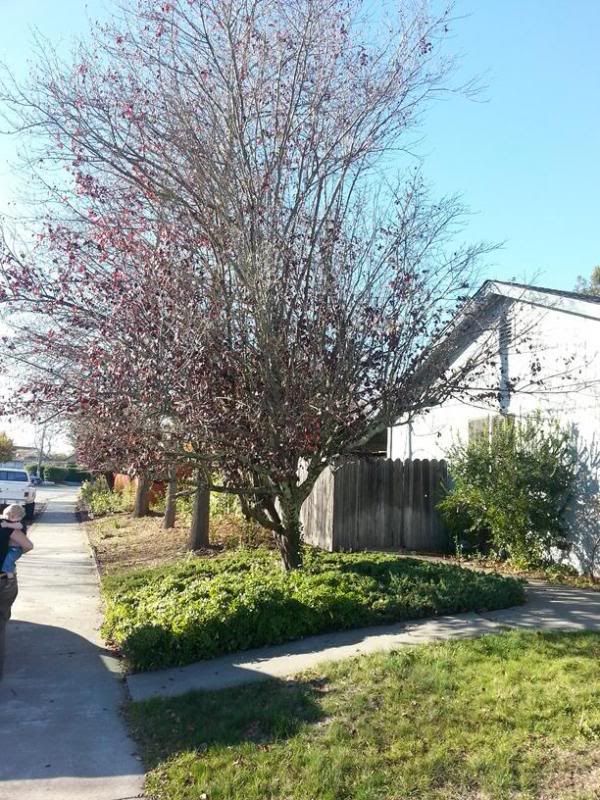
The stave was 2.5 inches in diameter tapering to 2 inches on the small end. When I cut it it was 72 inches long.
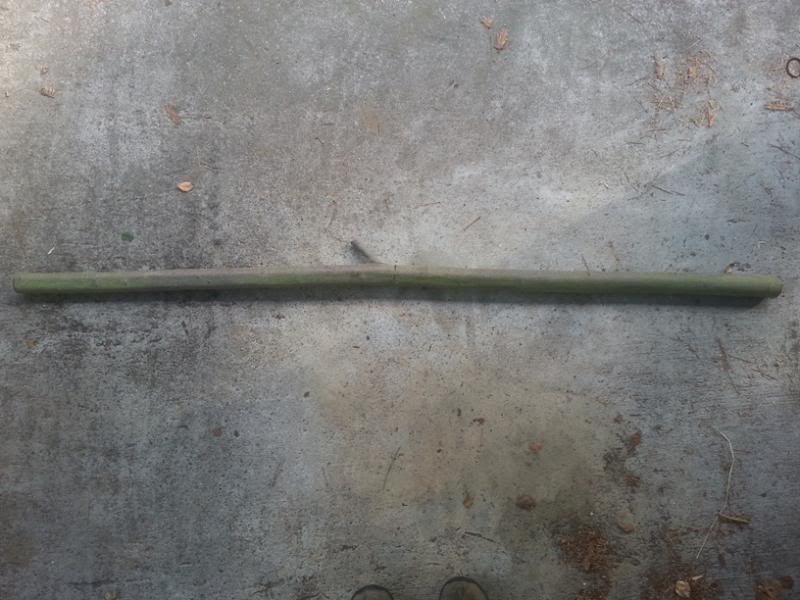
On these small diameter pieces, I read the bark for twist, but I always start with a hatchet to rough the bow out. I picked the belly by trying minimize heat treating for string alignment (a profile where the tips where almost inline) and a slightly deflexed inner limb profile, which I tend to prefer. This layout (what side of the stave I picked for the belly)resulted in a moderately high crown, but PLP is both elastic and strong in tension, so I'm not too concerned with a high-ish crown.
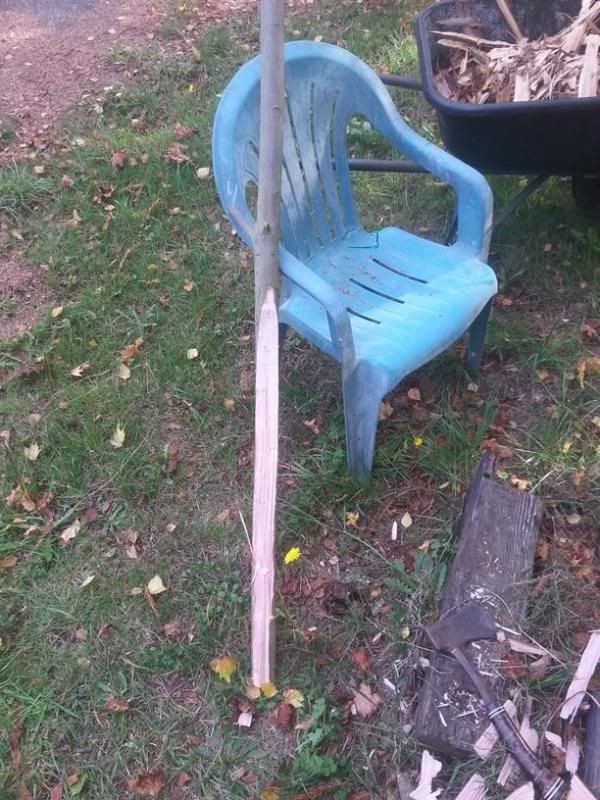
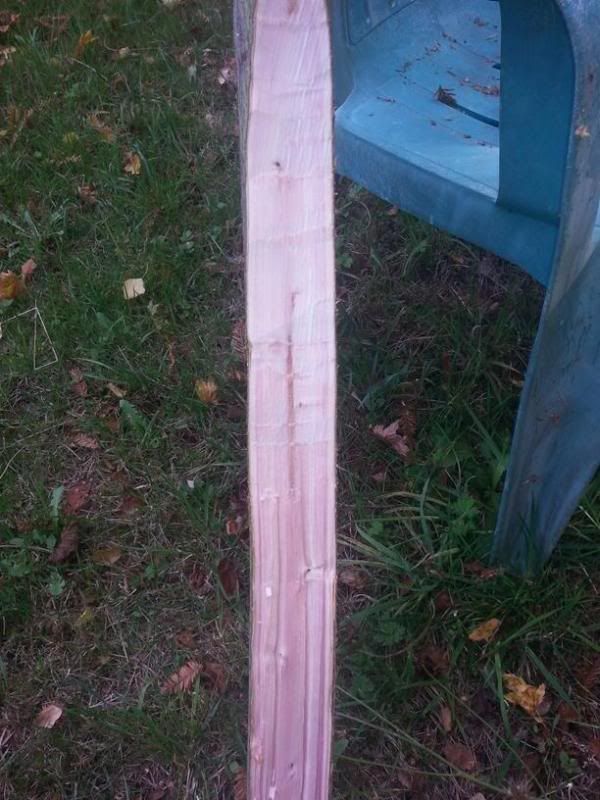
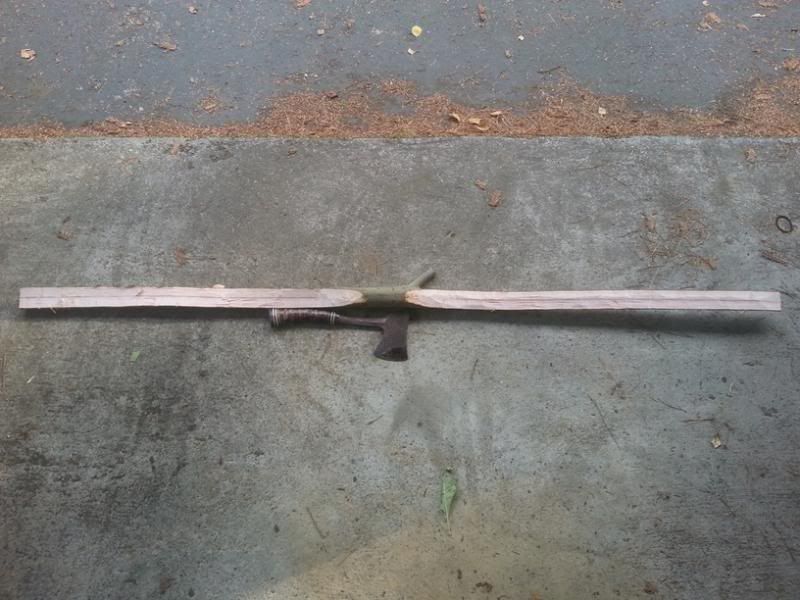
My primary goal in roughing the bow out was to get the limbs reduced down past the pith. If you don't remove material past the pith in PLP, it's been my experience that there is almost no way to avoid the bow checking. But if reduce past the pith, and dry carefully, I usually don't have to much problem with checking.
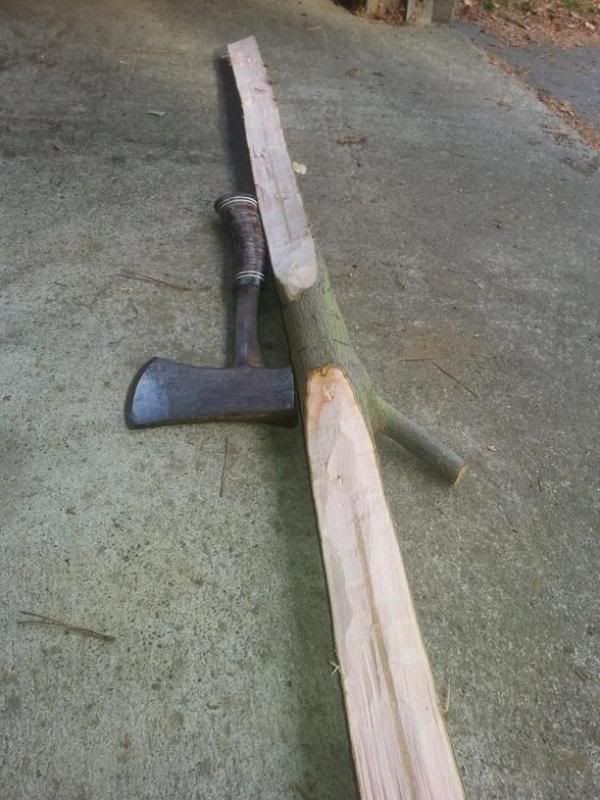
Once I have roughed out the stave with my hatchet, I put the bow in the vice to make sure that the two 'planes' of my limbs are paralleled (meaning, to make sure I'm not introducing twist shaping my limbs in an uneven way). I than work the limbs down a little more with the draw knife as I even them out.
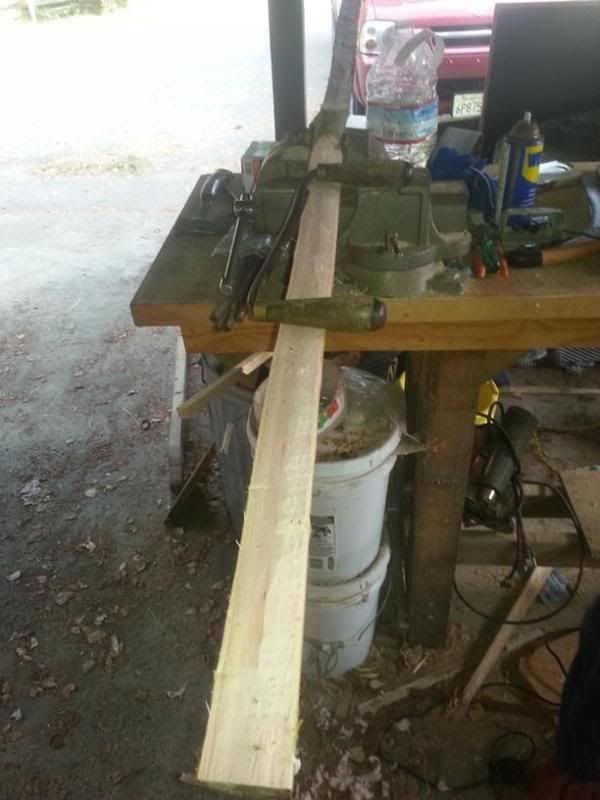
Once I had the stave reasonably roughed out I wrapped it in plastic wrap to prevent checking (at least I tried). My drying process for drying small diameter PLP is: rough the bow out, wrap in plastic, let sit for 2-3 weeks away from heat, cut holes in plastic (1-2 weeks), remove plastic (1 week), dry indoors near the fire 2 week. This 7-8 week process gets the wood dry, although not seasoned (not getting into that debate here). I bring the bow inside as I work on it and based on how slow I am, that gives it a few more months of drying time


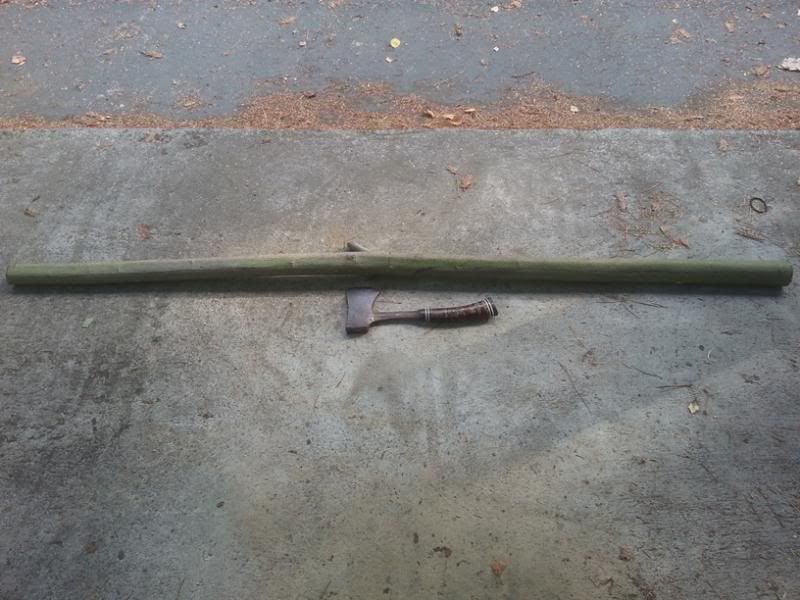
Lots more to come...